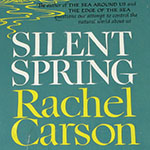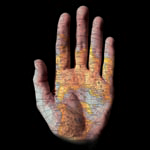Chapter 1 - The Origins of Sustainability
Part 4 - 20th Century Awakening of Sustainability
 In the Twentieth century, the intensification of land use, population growth, industrialization, urban decay, suburban sprawl, pollution, and new knowledge about the human impact on nature gave rise to the conservation movement and public policy approaches to limit and mitigate damage to the environment and hazard to people. Trans-boundary and even global impacts started to demonstrate that the concerns would need responses that were often international. In the United States, the growth of Federal and state regulatory controls on impacts to the “commons” were developed in response to public outcry, environmental damage, and increasing concerns about public health and environmental quality. Clean water, clean air, and safe food became entwined with the greater concerns for managing, preserving, and protecting natural resources and their tangible and non-tangible values.
In the Twentieth century, the intensification of land use, population growth, industrialization, urban decay, suburban sprawl, pollution, and new knowledge about the human impact on nature gave rise to the conservation movement and public policy approaches to limit and mitigate damage to the environment and hazard to people. Trans-boundary and even global impacts started to demonstrate that the concerns would need responses that were often international. In the United States, the growth of Federal and state regulatory controls on impacts to the “commons” were developed in response to public outcry, environmental damage, and increasing concerns about public health and environmental quality. Clean water, clean air, and safe food became entwined with the greater concerns for managing, preserving, and protecting natural resources and their tangible and non-tangible values.
In the United States, development of a body of environmental law and regulations set a pace and pattern that was mirrored and often improved upon across the globe. Episodic events in our shared history, such a national crises in urban air pollution, dirty water, wildlife poisonings, and a food supply with inadequate safety drove us to collectively examine our needs for economic development and expansion, and balance those needs against our desire for a quality of life that includes fishable and swimmable waters, smog-free skylines, abundant and accessible nature, and health. And thus was born a concern for the long-view, by asking not only what is good for the present, but more importantly, what is good for the future.
As a species, we are not good at restraint. Perhaps we are driven by natural prerogatives, instinct, and opportunity to push “Westward”, to expand, to explore, to harvest, to “have dominion”, and to “boldly go.” Rapidly growing human population and environmental degradation are already defining limits of our past notions of unbounded opportunity that consumes, rather than sustains, the natural world. To find balance, we will have to learn restraint, or face the rushing reality that will be our future and our children’s future. For all the misfortune and mistakes of the past, we do stand on the foundation of many who came before and acted well, and made our lives better. We have that continuing and shared responsibility, one of hope that we too can rise to our challenge. The task is great.
We have the opportunity to be the generation that did great things, or the ones to blame for a future far more desolate and limited than the present we have been given. We need to be smart and practical, compassionate and caring, and understand the diversity of challenges that humanity faces in all parts of the world. We are at a point where no one stands alone. We are all connected and this connectedness should create shared values to sustain our air, our water, and the biological richness that is Earth. Our environmental history does not have to be our environmental future. The lessons of the past can be ignored for profit or power, or they can provide waypoints for future possibility. We have that choice. -GM
Keywords
Required Reading
- History of Sustainability. Sustainability and the U.S. EPA (2011) National Academies Press, Washington, DC. (12 pages; pp 15-26)
(Photo credit: "Farmer and sons walking in the face of a dust storm. Cimarron County, Oklahoma, USA." Arthur Rothstein, for the Farm Security Administration, 1936)







